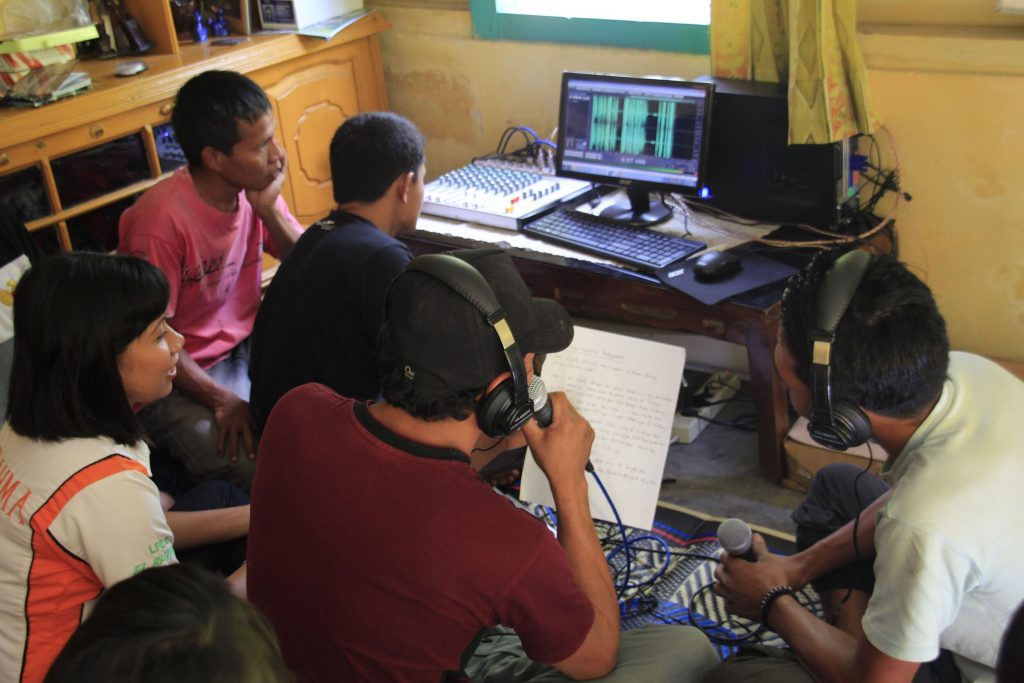Background and objective
When indigenous peoples establish and manage their own media, communities bridge an inter-generational communication gap, which further contributes to the struggle of their rights.
This project aims to exercise Article 16 of the United Nations Declaration on the Rights of Indigenous Peoples, which declares that indigenous peoples have the right to have their own media. This project will be implemented in four indigenous communities, namely the Mollo, Semunying Jaya, Tana Toraja, and Sakai because of their particular challenges in the preservation of indigenous knowledge, leadership, and governance. In that context, the rights of the Mollo community have been challenged by mining companies, the rights of the Semunying Jaya by oil palm plantations, and those of Tana Toraja by tourism misrepresentation, while the Sakai community faces cultural extinction. Community radio stations and smartphone applications that are able to interpret the history and values of indigenous territories will be used to build inter-generational communication between elders and youth as a way to preserve and protect indigenous knowledge, leadership, and governance.
Local partner information
The Aliansi Masyarakat Adat Nusantara (Indigenous Peoples’ Alliance of the Archipelago) works to empower, advocate and mobilize indigenous peoples of the archipelago to protect their collective rights and live in ways that safeguard the environment for current and future generations. AMAN’s programs meet local, national and global challenges by using indigenous values, knowledge and solidarity to promote social justice, ecological sustainability and human welfare.

